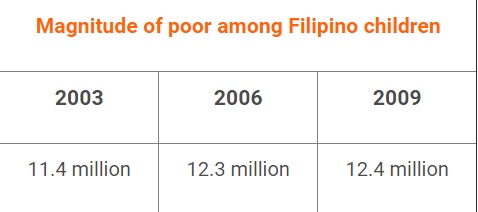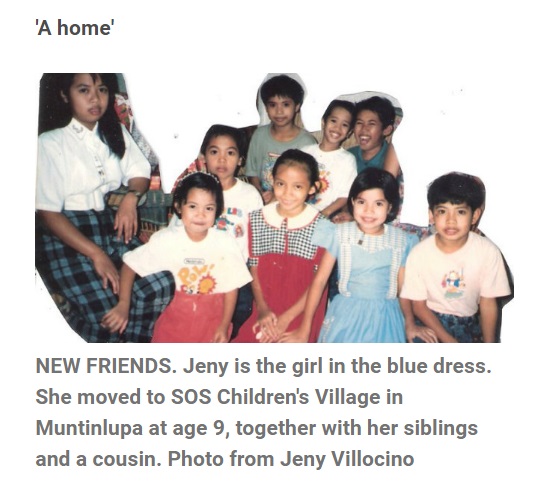Mar 30, 2019 at 12:49 pm
An Article on Abandoned Children in the Philippines
Update posted by Odilon dela MercedMANILA, Philippines – How many "abandoned" and "neglected" children do you encounter everyday?
According to the Council for the Welfare of Children's (CWC) latest data, as of 2011, there are over 3,000 neglected and abandoned Filipino children. Since 2003, children have had the highest magnitude of poor among basic sectors, the National Statistical Coordination Board (NSCB) reported.
These children do not have enough money to “satisfy their nutritional requirements and other basic needs.”
As of 2011, children made up 52.6% of the country’s total poor individuals, the Department of Social Welfare and Development (DSWD) also revealed. Meanwhile, 30,000-50,000 children are annually displaced by armed conflict, CWC stressed.
These children are vulnerable to abuse – physical, sexual, emotional – trafficking, and hazardous labor. Others get involved in illegal activities either as prey or perpetrator.
Many end up in the streets both in rural and urban areas. Others, however, end up transferring from one shelter to another – provided by non-governmental organizations (NGOs), DSWD, or their relatives.
Families, for them, are only ephemeral.
Philippine laws define “abandoned children” as:
- Having no proper parental care
- Left by parents for 3 continuous months
Children are “neglected” if:
- Their basic needs are unattended for 3 continuous months
- Physically neglected: Child is malnourished, poorly dressed, no proper shelter, unattended
- Emotionally neglected: Child is maltreated, raped, seduced, exploited; endures unhealthy labor; forced to beg; exposed to gambling, prostitution, vices
Jeny Villocino has lived in many houses, but never a home.
At 6, her parents separated and she, along with her 6 siblings, were left with their grandmother. Soon after, poverty took them apart.
Each child had to live with a different relative. It was either this or they go hungry, their grandmother decided.
Jeny hopped from one relative to another for years. One weekend, she was in Cavite; the next, in Cubao or elsewhere. “Pasa-pasahan.” (I was passed around.)
She wore several uniforms; she did not stay in one school for too long.
“I hope other kids won’t experience this. It’s always temporary, as if everything’s borrowed,” now 32-year-old Jeny said. “I’m lucky I wasn't abused, but many are."
Some children are forced to shoulder an entire family’s chores in exchange for living with them. Others are maltreated, starved, or ignored – creating a cycle of negligence.
The Philippine Child and Youth Welfare Code of 1974 imposes “criminal liability” on parents who sell, exploit, abandon, or neglect their children – this includes not enrolling them in school and depriving them of care.
The penalty, however, is merely an “imprisonment from 2-6 months or a fine not exceeding P500, or both, at the discretion of the Court.” The Code also states that the government must provide assistance to needy families and solo parents.
In case of neglect or abandonment, children are placed under the care of DSWD, which manages residential care facilities. It may also refer children to licensed child-caring institutions for care or adoption.
Not everyone in these facilities is orphaned; others have parents, but are incapable of support.
“There’s a worrying trend that more and more [Filipino] children are left to government’s social services and to non-governmental child-care agencies,” a 2011 study by Save the Children argued.
The government, however, cannot support all its children; not everyone is reached by social services.
(Excerpts from Fritzie Rodriguez report "A Village for 'Abandoned' and 'Neglected' Children" for Rappler first published 12:03 PM, June 23, 2014).
